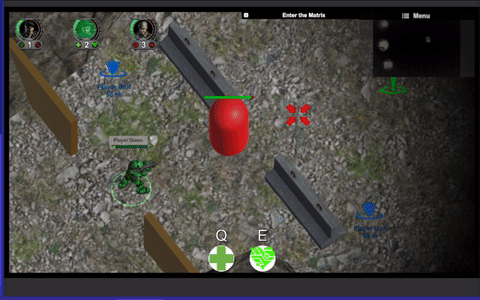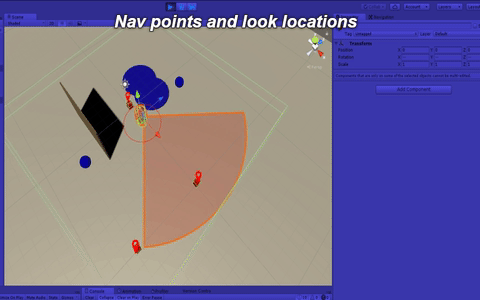WHY YOU SHOULD LEARN WITH UNITY
The gateway to game development
There are a lot of free game engines out there these days that pack a serious punch. Those who are looking to enter into the game development industry are often left scratching their heads as to which engine to start with. There are a sea of competitors, all of which have aspects they shine in and others in which they lack. I will compare what I think are the most popular options at the time of posting this. Then breakdown why I think Unity is the best for beginners.

The most well-known free engine these days is arguably Unreal Engine 4 (UE4). The list of best-selling games made in this engine is a mile long. Recently having gone free to compete with Unity 5, UE4 has undergone a major face lift since Unreal Engine 3. Making it a more powerful, documented, and accessible option than its predecessor. Despite its improvements over UE3, UE4 can still be very intimidating to new users.
Another popular option jockeying for new developer attention is YoYoGame’s GameMaker: Studio. An engine that has been a mainstay in the hobbyist community for over a decade. A great place to start for those with no technical experience. The main drawback is that the engine’s proprietary GameMaker Language (GML) is much slower than more traditional programming languages. The engine itself is largely limited to 2d games which can hold back burgeoning developers who want more out of their first engine.

Stencyl is another great option for those who are not technically inclined. Inspired by MIT’s Scratch project, Stencyl is based around a drag and drop experience for making games. The option is still there to program in HAXE, a language derived from the Flash API. Like GameMake:Studio, Stencyl is largely limited to 2d games. The big catch with Stencyl is that unless you are publishing free web games, you will have to buy into one of the pricy subscriptions.
Amazon has recently entered the fray with their free and open source Lumberyard engine. It sports great graphics quality, direct integration with Amazon’s hosting service AWS Cloud, and easy integration with the popular streaming service Twitch. The future is looking great for Lumberyard but it is still in beta and that means there are a lot of bugs to work out and limited documentation on how the thing works.

Finally there is Unity, who’s humble begins in a basement over a decade ago has blossomed into the game development monolith it is today (Brodkin, J. 2013). The current iteration, Unity 5, is the engine that anybody who is serious about game development should start with. The engine is proven to be just as capable as the heavy hitters, albeit always on the heels of UE4 and Cryengine in terms of graphical fidelity. The official Unity website is stocked full of well-maintained documentation and tutorials that reveal everything there is to know about the Unity engine. On top of that there are many other sites, such as Lynda.com and Youtube.com, which contain a huge amount of information about anything from getting started to implementing advanced features with Unity. Unity uses Javascript and C# for scripting, both of which are great languages to learn game programming with. On top of this anything from iOS and android to PC and console (PS4, XB1, etc.) are targetable by anyone with Unity. In conclusion, the robust game engine Unity 5, as well as the resources and community around it, is without a doubt the go to starting point for anyone that is considering game development as a serious hobby or career.
References:
Brodkin, J. (2013, June 3). How Unity3D Became a Game-Development Beast. (Online) Retrieved from
Unity logo - www.unity3d.com
Unreal Engine 4 logo - www.unrealengine.com
Stencyl logo - www.stencyl.com
http://insights.dice.com/2013/06/03/how-unity3d-become-a-game-development-beast/





